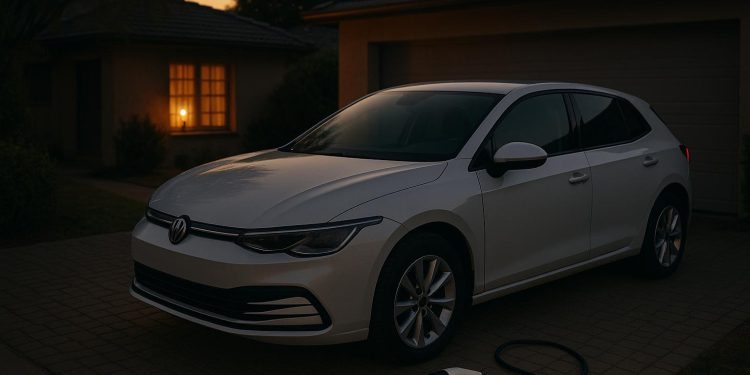South Africa’s frequent power outages, caused by load shedding, are making it harder for consumers to adopt electric vehicles (EVs). The challenge? Charging an EV requires reliable electricity, and the country’s unstable grid disrupts both home and public charging options. This not only inconveniences current EV owners but also discourages potential buyers.
Key takeaways:
- Charging disruptions: Power cuts leave EV owners unable to charge their vehicles, leading to range anxiety and unreliable travel.
- Higher costs: Many owners invest in expensive backup systems like solar panels or home batteries to counter outages.
- Slowed adoption: Consumers hesitate to switch to EVs, viewing traditional cars as more practical during power outages.
- Solutions emerging: Solar-powered charging stations and improved battery storage are helping reduce reliance on the grid.
While the EV market is growing, load shedding remains a major hurdle, influencing consumer trust and increasing ownership costs. Addressing these challenges with alternative energy solutions and better infrastructure is key to supporting EV adoption in South Africa.
South Africa’s Load Shedding Problem
Current Energy Supply Issues
South Africa’s energy challenges are a key factor when looking at the obstacles for electric vehicles (EVs). The country’s power grid struggles to meet national demand, forcing Eskom, the state-owned electricity provider, to implement load shedding. This system of scheduled power outages is designed to prevent a total grid collapse, but it highlights the ongoing instability in the energy supply.
How Load Shedding Affects Daily Life and Business
The effects of load shedding ripple across various sectors, disrupting both daily life and business operations. For instance, South Africa’s automotive industry has faced significant challenges, with power outages interfering with manufacturing processes and even impacting dealership operations. These disruptions paint a clear picture of the difficulties EV owners and the broader industry face in such an unpredictable energy environment.
Load shedding effects on Electric Cars
How Load Shedding Affects EV Owners
For electric vehicle (EV) owners, power outages bring a unique set of challenges. Unlike traditional cars that can refuel in minutes, EVs rely entirely on electricity. When the power goes out, so does the ability to charge – leaving owners stuck and raising concerns about EV reliability.
Charging Problems During Power Outages
EV charging depends on a steady power supply, and outages render both home and public charging stations useless. Whether you’re plugging in at home, at a shopping mall, or a dedicated charging station, the grid’s instability disrupts all options.
This is especially problematic when public charging stations – often located in office buildings or retail centers – are also impacted. When load shedding hits, EV owners may lose access to their primary and backup charging options, leaving them with limited alternatives.
To make matters worse, scheduled outages can change unexpectedly. This leaves drivers with partially charged batteries and limited range, a significant issue for those who rely on their EVs for commuting or running a business. Long outages lasting several hours only add to the frustration, making it harder to plan daily travel.
These disruptions are more than just inconvenient – they’re a major reason why some consumers question the practicality of EVs.
Range Anxiety and Consumer Concerns
Load shedding directly feeds into range anxiety, a common worry among EV owners. To conserve battery power, many drivers cut back on trips, turning even simple errands into a source of stress. Keeping an eye on both battery levels and the power outage schedule becomes a daily juggling act, adding to the mental load of EV ownership.
While backup power solutions like home batteries or portable chargers can help, they often come with hefty price tags. These additional costs can make EVs feel less appealing, especially for those already on the fence about making the switch to electric.
sbb-itb-09752ea
Load Shedding’s Effect on EV Sales and Adoption
South Africa’s ongoing power issues have become a major hurdle for the growth of electric vehicles (EVs). These challenges are reshaping how people perceive electric transportation and heavily influencing their buying decisions. The instability of the grid isn’t just an inconvenience – it’s actively altering consumer behavior. This shift helps explain why the EV market is slowing down and why ownership costs are climbing under the strain of load shedding.
How Power Outages Impact Consumer Perception
Frequent power outages tied to load shedding have cast doubt on the reliability and practicality of EVs. For many potential buyers, the question is simple: Can an EV handle daily life during outages? This uncertainty is eroding consumer confidence in electric vehicles. As a result, people are opting for traditional cars, which they see as more dependable when the power supply is unstable. This hesitation is slowing down EV sales in an already challenging market.
The Hidden Costs of EV Ownership
The financial side of owning an EV during load shedding adds another layer of complexity. Many EV owners are now investing in backup charging solutions to navigate the unreliable grid. These extra costs, like home battery systems or solar setups, increase the overall expense of switching to electric. For those considering an EV, these added financial pressures make the decision even tougher.
Ways to Reduce Load Shedding Impact on EVs
With the challenges of grid instability and rising costs, finding alternative ways to charge electric vehicles (EVs) has become essential. Load shedding not only disrupts charging schedules but also fuels range anxiety for EV owners. To combat these issues, new energy solutions are stepping in. These approaches aim to lessen dependence on the national grid by incorporating renewable energy sources and better energy storage systems.
Solar Power and Off-Grid Charging Solutions
Solar power paired with battery storage offers a practical way to charge EVs during power outages. For instance, home setups that combine solar panels with battery backups allow EV owners to generate and store energy during the day, ensuring their vehicles can be charged even during prolonged blackouts. On a broader scale, commercial spaces are exploring off-grid solar-powered charging stations to provide consistent access to energy.
Recent advancements in battery technology have further enhanced storage capacity and charging efficiency, making off-grid solutions even more viable. By tapping into renewable energy and prioritizing energy self-sufficiency, EV owners can navigate the challenges of load shedding more effectively – building a more resilient and dependable approach to sustainable transportation.
Conclusion: EV Growth Despite Power Challenges
Even with frequent load shedding, South Africa’s electric vehicle (EV) market continues to expand, driven by creative solutions to counter power disruptions. While outages bring real hurdles – like interrupted charging and higher costs – manufacturers and stakeholders are stepping up with strategies to address these issues head-on.
The market’s resilience is evident. For example, October 2025 welcomed Leapmotor‘s entry into the South African market, and Kia has plans to launch EV models in 2026, signaling automakers’ determination to push forward despite the challenges. Advances in battery technology and solar energy solutions are also playing a key role in keeping the momentum alive.
Looking ahead, stronger policy support and investments in solar-powered charging stations and battery backup systems could further accelerate growth. These measures, alongside ongoing technological progress, are helping the South African EV market chart a path forward, even in the face of persistent power outages.
FAQs
How can EV owners in South Africa charge their vehicles effectively during load shedding?
Frequent load shedding in South Africa can make charging electric vehicles (EVs) a bit tricky, but there are practical ways to work around it. The first step? Plan ahead. Keep an eye on load shedding schedules and aim to charge your EV when electricity is more stable, such as during off-peak hours.
Another solution is to invest in a home backup power system. Options like solar panels paired with battery storage or an inverter can provide a reliable way to charge your vehicle, even during power outages.
Public charging stations are also worth considering. Many of these stations are equipped with backup power systems to remain operational during outages. Take the time to locate EV-friendly stations in your area that can serve as a dependable backup.
By combining thoughtful planning with these alternative charging options, EV owners can overcome the hurdles of load shedding while continuing to embrace sustainable transportation in South Africa.
What are some long-term solutions to address the impact of load shedding on electric vehicle adoption in South Africa?
To tackle the challenges of load shedding and boost the adoption of electric vehicles (EVs) in South Africa, a few long-term strategies could make a big difference. One key step is investing in renewable energy sources like solar and wind to help stabilize the power grid. Expanding energy storage solutions, such as large-scale battery systems, can also provide much-needed backup during power outages. On a smaller scale, encouraging homeowners to install solar panels with battery backups for EV charging can be a game-changer.
Government support is another critical piece of the puzzle. Incentives like subsidies for renewable energy installations and tax breaks for EV buyers could make EVs more accessible while promoting cleaner energy. At the same time, collaboration is vital – energy providers, car manufacturers, and policymakers need to work together to build a system that ensures reliable electricity while supporting the growth of EVs.
Are there any financial incentives to help South Africans invest in backup power solutions for electric vehicles?
Currently, there isn’t much publicly available information about specific financial incentives or government programs in South Africa that directly assist with buying backup power solutions for electric vehicles (EVs). That said, some private companies and financial institutions might offer financing options or discounts for renewable energy systems, such as solar panels or battery storage, which can work well alongside EV charging setups.
To stay updated on potential incentives or support programs, check with local energy providers or government resources. Keeping an eye on developments in South Africa’s EV and renewable energy sectors can help you make more informed decisions when planning your investment.
Related Blog Posts
- EV Buyers in South Africa: Emissions and Behavior
- Electric vs Petrol: Trends in South Africa
- South Africa’s EV Policies: Renewable Charging Impact
- EV Charging in South Africa: Grid Mix Impact





